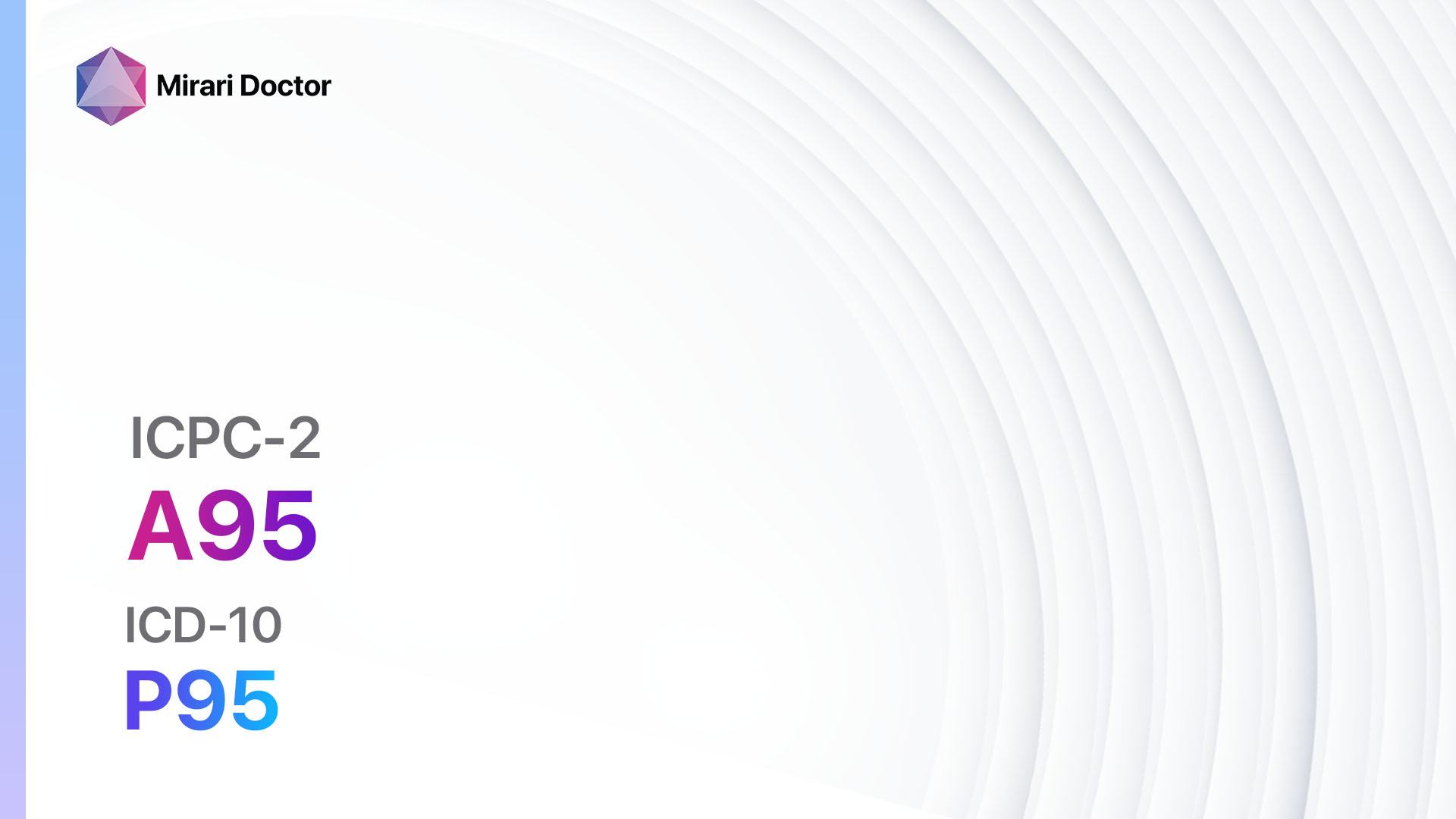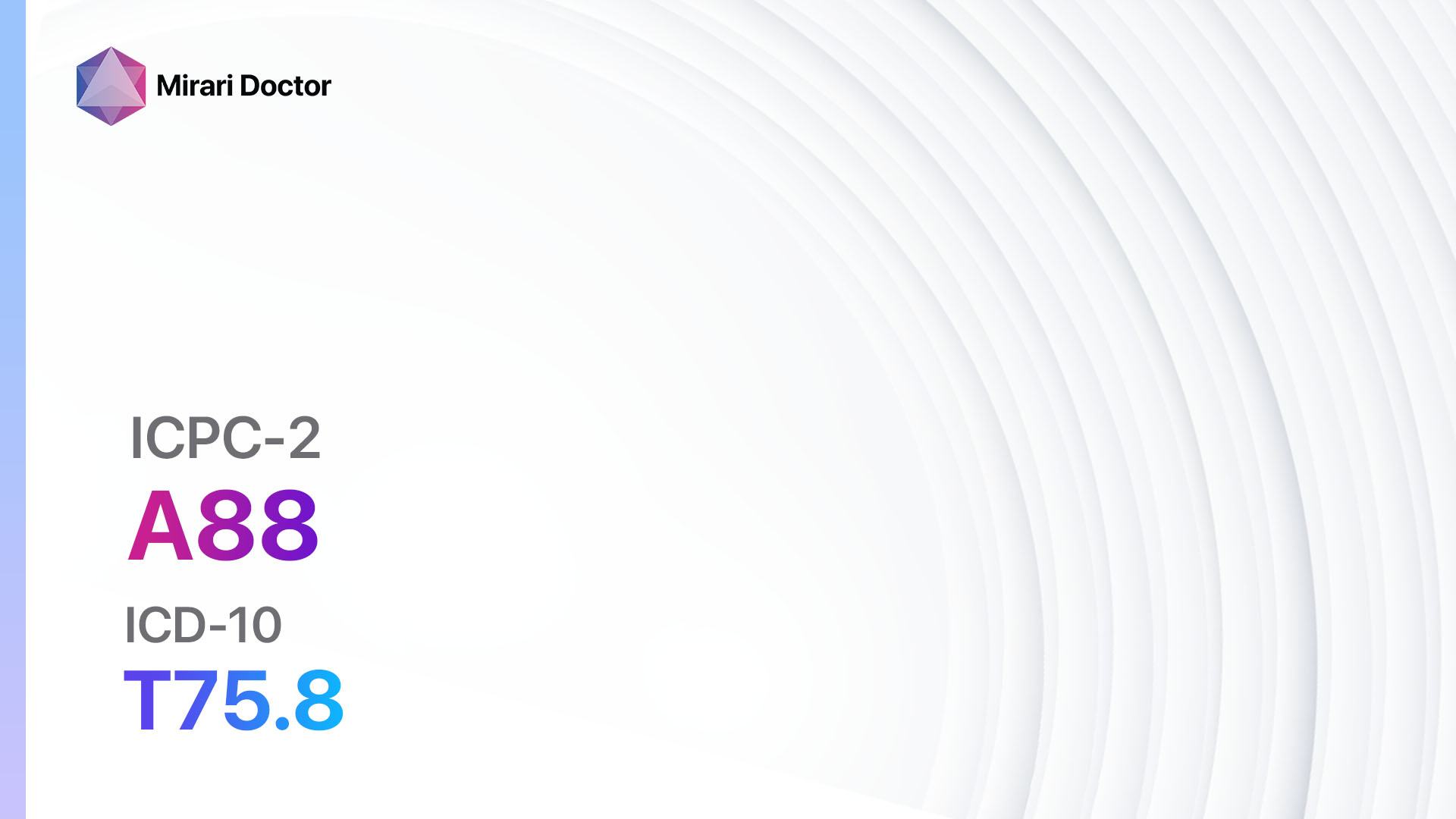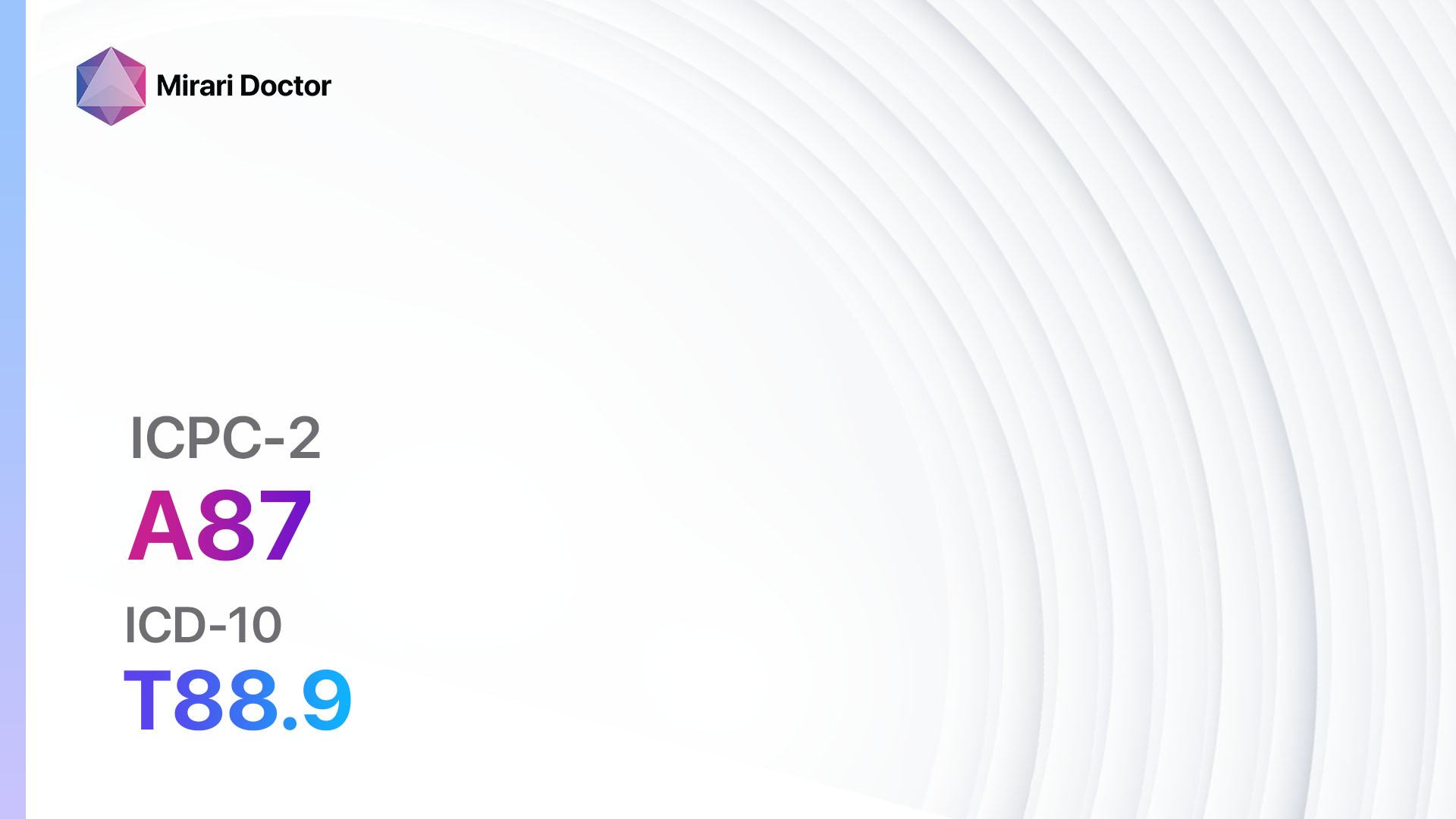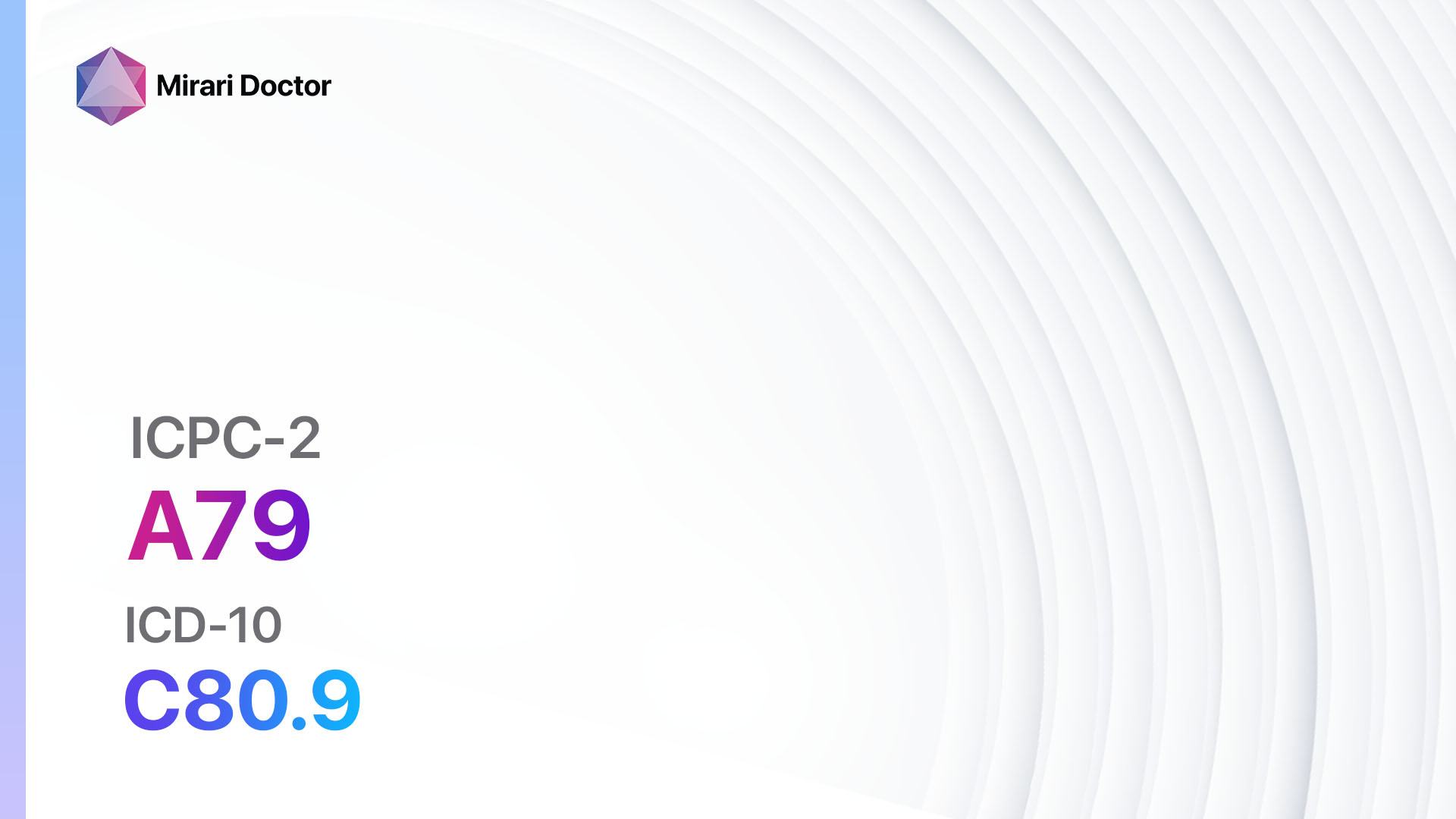
Introduction
Concern or fear of medical treatment is a common issue that many individuals face[1]. It can be a significant barrier to receiving necessary medical care and can have a negative impact on overall health outcomes[2]. The aim of this guide is to provide healthcare professionals with a comprehensive approach to addressing and managing concerns or fears related to medical treatment.
Codes
- ICPC-2 Code: A13 Concern/fear medical treatment
- ICD-10 Code: Z71.1 Person with feared complaint in whom no diagnosis is made[3]
Symptoms
- Anxiety or panic attacks[4]
- Avoidance of medical procedures or appointments[5]
- Increased heart rate or palpitations
- Sweating or trembling
- Difficulty breathing or shortness of breath
- Nausea or gastrointestinal distress
Causes
- Previous traumatic medical experiences[6]
- Fear of pain or discomfort
- Fear of needles or blood
- Fear of loss of control or vulnerability
- Fear of medical equipment or procedures
Diagnostic Steps
Medical History
- Conduct a comprehensive medical history to gather relevant patient information, including previous medical experiences, traumatic events, and specific fears or concerns related to medical treatment.
- Assess the patient’s level of anxiety or fear using validated screening tools, such as the Fear of Medical Procedures Scale or the Hospital Anxiety and Depression Scale[7].
Physical Examination
- Perform a thorough physical examination to rule out any underlying medical conditions that may contribute to the patient’s concerns or fears.
- Assess vital signs, including heart rate, blood pressure, and respiratory rate, to evaluate for signs of physiological distress.
Laboratory Tests
- No specific laboratory tests are indicated for the diagnosis of concern or fear of medical treatment. However, it may be necessary to perform blood tests or other diagnostic tests if there are underlying medical conditions that need to be addressed.
Diagnostic Imaging
- Diagnostic imaging is not typically required for the diagnosis of concern or fear of medical treatment. However, if there are specific fears related to certain procedures or equipment, it may be helpful to discuss the use of imaging modalities to alleviate any concerns.
Other Tests
- No other specific diagnostic tests are indicated for the diagnosis of concern or fear of medical treatment. However, additional assessments, such as psychological evaluations or consultations with mental health professionals, may be necessary to further evaluate and manage the patient’s fears or concerns.
Follow-up and Patient Education
- Schedule regular follow-up appointments to monitor the patient’s progress and address any ongoing concerns or fears.
- Provide patient education materials and resources on coping strategies, relaxation techniques, and support groups for individuals with medical-related fears or concerns[8].
Possible Interventions
Traditional Interventions
Medications:
Top 5 drugs for concern or fear of medical treatment:
- Benzodiazepines (e.g., Diazepam, Lorazepam):
- Cost: Generic versions can be $3-$20/month.
- Contraindications: Allergy to benzodiazepines, history of substance abuse.
- Side effects: Drowsiness, dizziness, confusion.
- Severe side effects: Respiratory depression, paradoxical reactions.
- Drug interactions: Alcohol, opioids.
- Warning: Risk of dependence and withdrawal symptoms with long-term use.
- Selective Serotonin Reuptake Inhibitors (SSRIs) (e.g., Sertraline, Fluoxetine):
- Cost: Generic versions can be $3-$20/month.
- Contraindications: Allergy to SSRIs, concurrent use of monoamine oxidase inhibitors (MAOIs).
- Side effects: Nausea, headache, sexual dysfunction.
- Severe side effects: Serotonin syndrome, suicidal ideation.
- Drug interactions: MAOIs, other serotonergic medications.
- Warning: Risk of increased suicidal thoughts in young adults.
- Beta-blockers (e.g., Propranolol, Atenolol):
- Cost: Generic versions can be $3-$20/month.
- Contraindications: Severe bradycardia, heart block.
- Side effects: Fatigue, dizziness, bradycardia.
- Severe side effects: Bronchospasm, heart failure.
- Drug interactions: Calcium channel blockers, insulin.
- Warning: Should not be abruptly stopped.
- Antidepressants (e.g., Escitalopram, Venlafaxine):
- Cost: Generic versions can be $3-$20/month.
- Contraindications: Allergy to antidepressants, concurrent use of MAOIs.
- Side effects: Nausea, headache, sexual dysfunction.
- Severe side effects: Serotonin syndrome, suicidal ideation.
- Drug interactions: MAOIs, other serotonergic medications.
- Warning: Risk of increased suicidal thoughts in young adults.
- Antipsychotics (e.g., Quetiapine, Olanzapine):
- Cost: Generic versions can be $3-$20/month.
- Contraindications: Allergy to antipsychotics, history of agranulocytosis.
- Side effects: Sedation, weight gain, extrapyramidal symptoms.
- Severe side effects: Neuroleptic malignant syndrome, tardive dyskinesia.
- Drug interactions: Other sedating medications, anticholinergic medications.
- Warning: Increased risk of mortality in elderly patients with dementia-related psychosis.
Alternative Drugs:
- Buspirone: An anxiolytic medication that does not cause sedation or dependence.
- Hydroxyzine: An antihistamine with anxiolytic properties.
- Pregabalin: An anticonvulsant medication used for anxiety disorders.
- Propranolol: A beta-blocker that can be used specifically for performance anxiety.
- Gabapentin: An anticonvulsant medication that can be used for anxiety disorders.
Surgical Procedures:
- Surgical procedures are not typically indicated for the treatment of concern or fear of medical treatment. However, in severe cases where the fear is causing significant distress and impacting the patient’s quality of life, referral to a mental health professional for further evaluation and consideration of interventions, such as cognitive-behavioral therapy or exposure therapy, may be necessary.
Alternative Interventions
- Cognitive-behavioral therapy (CBT): A form of psychotherapy that focuses on identifying and changing negative thought patterns and behaviors associated with fear or anxiety. Cost: $100-$200 per session.
- Exposure therapy: A type of therapy that involves gradually exposing the patient to their feared situation or object in a controlled and supportive environment. Cost: $100-$200 per session.
- Mindfulness-based stress reduction (MBSR): A program that combines mindfulness meditation, body awareness, and yoga to help individuals manage stress and anxiety. Cost: $200-$400 for an 8-week program.
- Hypnotherapy: A therapeutic technique that uses hypnosis to help individuals access their subconscious mind and change negative thought patterns or beliefs. Cost: $100-$200 per session.
- Support groups: Joining a support group with individuals who have similar fears or concerns can provide a sense of community and understanding. Cost: Varies depending on the organization or group.
Lifestyle Interventions
- Relaxation techniques: Teach patients deep breathing exercises, progressive muscle relaxation, or guided imagery to help reduce anxiety and promote relaxation. Cost: Free.
- Meditation: Encourage patients to practice meditation regularly to help calm the mind and reduce stress. Cost: Free.
- Exercise: Regular physical activity can help reduce anxiety and improve overall well-being. Cost: Varies depending on the chosen activity (e.g., gym membership, fitness classes).
- Yoga: Yoga combines physical postures, breathing exercises, and meditation to promote relaxation and reduce anxiety. Cost: $10-$20 per class.
- Music therapy: Listening to calming music or engaging in music therapy sessions can help reduce anxiety and promote relaxation. Cost: Varies depending on the music therapy program or session.
It is important to note that the cost ranges provided are approximate and may vary depending on the location and availability of the interventions. It is recommended to consult with healthcare professionals or mental health specialists for specific cost information and availability in your area.
Mirari Cold Plasma Alternative Intervention
Understanding Mirari Cold Plasma
- Safe and Non-Invasive Treatment: Mirari Cold Plasma is a safe and non-invasive treatment option for various skin conditions. It does not require incisions, minimizing the risk of scarring, bleeding, or tissue damage.
- Efficient Extraction of Foreign Bodies: Mirari Cold Plasma facilitates the removal of foreign bodies from the skin by degrading and dissociating organic matter, allowing easier access and extraction.
- Pain Reduction and Comfort: Mirari Cold Plasma has a local analgesic effect, providing pain relief during the treatment, making it more comfortable for the patient.
- Reduced Risk of Infection: Mirari Cold Plasma has antimicrobial properties, effectively killing bacteria and reducing the risk of infection.
- Accelerated Healing and Minimal Scarring: Mirari Cold Plasma stimulates wound healing and tissue regeneration, reducing healing time and minimizing the formation of scars.
Mirari Cold Plasma Prescription
Video instructions for using Mirari Cold Plasma Device – A13 Concern/fear medical treatment (ICD-10:Z71.1)
| Mild | Moderate | Severe |
| Mode setting: 1 (Infection) Location: 0 (Localized) Morning: 15 minutes, Evening: 15 minutes |
Mode setting: 1 (Infection) Location: 0 (Localized) Morning: 30 minutes, Lunch: 30 minutes, Evening: 30 minutes |
Mode setting: 1 (Infection) Location: 0 (Localized) Morning: 30 minutes, Lunch: 30 minutes, Evening: 30 minutes |
| Mode setting: 2 (Wound Healing) Location: 7 (Neuro system & ENT) Morning: 15 minutes, Evening: 15 minutes |
Mode setting: 2 (Wound Healing) Location: 7 (Neuro system & ENT) Morning: 30 minutes, Lunch: 30 minutes, Evening: 30 minutes |
Mode setting: 2 (Wound Healing) Location: 7 (Neuro system & ENT) Morning: 30 minutes, Lunch: 30 minutes, Evening: 30 minutes |
| Mode setting: 7 (Immunotherapy) Location: 1 (Sacrum) Morning: 15 minutes, Evening: 15 minutes |
Mode setting: 7 (Immunotherapy) Location: 1 (Sacrum) Morning: 30 minutes, Lunch: 30 minutes, Evening: 30 minutes |
Mode setting: 7 (Immunotherapy) Location: 1 (Sacrum) Morning: 30 minutes, Lunch: 30 minutes, Evening: 30 minutes |
| Total Morning: 45 minutes approx. $7.50 USD, Evening: 45 minutes approx. $7.50 USD |
Total Morning: 90 minutes approx. $15 USD, Lunch: 90 minutes approx. $15 USD, Evening: 90 minutes approx. $15 USD, |
Total Morning: 90 minutes approx. $15 USD, Lunch: 90 minutes approx. $15 USD, Evening: 90 minutes approx. $15 USD, |
| Usual treatment for 7-60 days approx. $105 USD – $900 USD | Usual treatment for 6-8 weeks approx. $1,890 USD – $2,520 USD |
Usual treatment for 3-6 months approx. $4,050 USD – $8,100 USD
|
 |
|
Use the Mirari Cold Plasma device to treat Concern/fear medical treatment effectively.
WARNING: MIRARI COLD PLASMA IS DESIGNED FOR THE HUMAN BODY WITHOUT ANY ARTIFICIAL OR THIRD PARTY PRODUCTS. USE OF OTHER PRODUCTS IN COMBINATION WITH MIRARI COLD PLASMA MAY CAUSE UNPREDICTABLE EFFECTS, HARM OR INJURY. PLEASE CONSULT A MEDICAL PROFESSIONAL BEFORE COMBINING ANY OTHER PRODUCTS WITH USE OF MIRARI[9][10].
Step 1: Cleanse the Skin
- Start by cleaning the affected area of the skin with a gentle cleanser or mild soap and water. Gently pat the area dry with a clean towel.
Step 2: Prepare the Mirari Cold Plasma device
- Ensure that the Mirari Cold Plasma device is fully charged or has fresh batteries as per the manufacturer’s instructions. Make sure the device is clean and in good working condition.
- Switch on the Mirari device using the power button or by following the specific instructions provided with the device.
- Some Mirari devices may have adjustable settings for intensity or treatment duration. Follow the manufacturer’s instructions to select the appropriate settings based on your needs and the recommended guidelines.
Step 3: Apply the Device
- Place the Mirari device in direct contact with the affected area of the skin. Gently glide or hold the device over the skin surface, ensuring even coverage of the area experiencing.
- Slowly move the Mirari device in a circular motion or follow a specific pattern as indicated in the user manual. This helps ensure thorough treatment coverage.
Step 4: Monitor and Assess:
- Keep track of your progress and evaluate the effectiveness of the Mirari device in managing your Concern/fear medical treatment. If you have any concerns or notice any adverse reactions, consult with your health care professional.
Note
This guide is for informational purposes only and should not replace the advice of a medical professional. Always consult with your healthcare provider or a qualified medical professional for personal advice, diagnosis, or treatment. Do not solely rely on the information presented here for decisions about your health. Use of this information is at your own risk. The authors of this guide, nor any associated entities or platforms, are not responsible for any potential adverse effects or outcomes based on the content.
Mirari Cold Plasma System Disclaimer
- Purpose: The Mirari Cold Plasma System is a Class 2 medical device designed for use by trained healthcare professionals. It is registered for use in Thailand and Vietnam. It is not intended for use outside of these locations.
- Informational Use: The content and information provided with the device are for educational and informational purposes only. They are not a substitute for professional medical advice or care.
- Variable Outcomes: While the device is approved for specific uses, individual outcomes can differ. We do not assert or guarantee specific medical outcomes.
- Consultation: Prior to utilizing the device or making decisions based on its content, it is essential to consult with a Certified Mirari Tele-Therapist and your medical healthcare provider regarding specific protocols.
- Liability: By using this device, users are acknowledging and accepting all potential risks. Neither the manufacturer nor the distributor will be held accountable for any adverse reactions, injuries, or damages stemming from its use.
- Geographical Availability: This device has received approval for designated purposes by the Thai and Vietnam FDA. As of now, outside of Thailand and Vietnam, the Mirari Cold Plasma System is not available for purchase or use.
References
- Hollander, M. A. G., & Greene, M. G. (2019). A conceptual framework for understanding iatrophobia. Patient Education and Counseling, 102(11), 2091-2096.
- Turabian, J. L. (2019). Fear of going to the doctor: An increasing but underrated problem. Journal of Family Medicine and Primary Care, 8(3), 838-842.
- World Health Organization. (2019). International statistical classification of diseases and related health problems (11th ed.).
- Stein, D. J., & Matsunaga, H. (2006). Specific phobia: a disorder of fear conditioning and extinction. CNS Spectrums, 11(4), 248-251.
- Youssef, N. A., Reinhart, K., Sakr, S., & Wahba, R. (2019). Overcoming barriers to healthcare utilization in Qatar: A survey of patients with chronic disease. Journal of Multidisciplinary Healthcare, 12, 143-153.
- Oosterink, F. M., De Jongh, A., & Aartman, I. H. (2009). Negative events and their potential risk of precipitating pathological forms of dental anxiety. Journal of Anxiety Disorders, 23(4), 451-457.
- Zigmond, A. S., & Snaith, R. P. (1983). The hospital anxiety and depression scale. Acta Psychiatrica Scandinavica, 67(6), 361-370.
- Slade, T., Johnston, A., Oakley Browne, M. A., Andrews, G., & Whiteford, H. (2009). 2007 National Survey of Mental Health and Wellbeing: methods and key findings. Australian and New Zealand Journal of Psychiatry, 43(7), 594-605.
- Kessler, R. C., Chiu, W. T., Demler, O., & Walters, E. E. (2005). Prevalence, severity, and comorbidity of 12-month DSM-IV disorders in the National Comorbidity Survey Replication. Archives of General Psychiatry, 62(6), 617-627.
- Oosterink, F. M., De Jongh, A., & Aartman, I. H. (2009). Negative events and their potential risk of precipitating pathological forms of dental anxiety. Journal of Anxiety Disorders, 23(4), 451-457.
Related articles
Made in USA




























